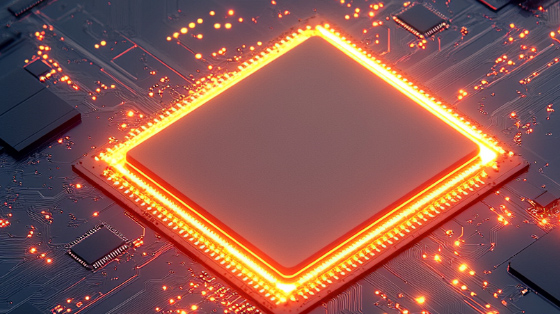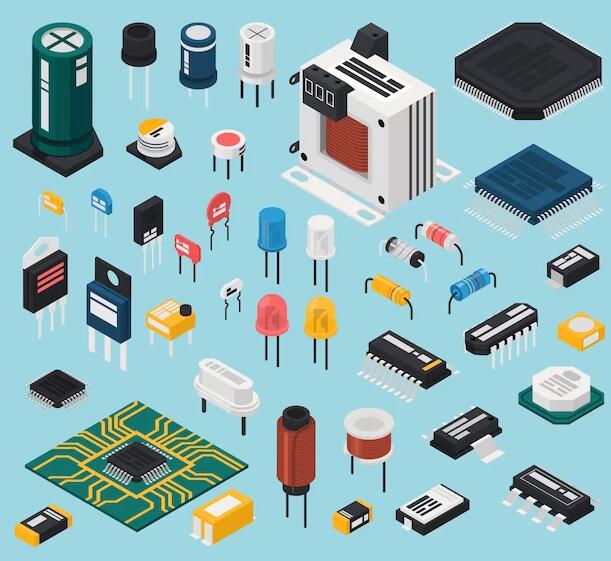Hello! now About Us
The Vital Role of Electronic Components in Shaping the Future
10/25/2024 11:21:06 AM
In the ever-evolving landscape of technology, electronic components stand as the unsung heroes, quietly powering the devices and systems that have become an integral part of our daily lives.
The world of electronic components is a complex and dynamic one, encompassing a vast array of products that range from the microscopic to the substantial. Integrated circuits, those minuscule marvels of engineering, lie at the heart of modern electronics. These complex chips are the brains behind everything from our smartphones and laptops to the sophisticated medical equipment that saves lives and the advanced industrial machinery that drives economic growth.
 Resistors, capacitors, and inductors may seem humble, but they are essential for regulating the flow of electricity in circuits. They come in a myriad of forms and specifications, each carefully designed to meet the specific needs of different applications. Whether it's a high-precision resistor for a sensitive measurement instrument or a large-capacity capacitor for power storage in an industrial setting, these components play a crucial role in ensuring the proper functioning of electronic systems.
Resistors, capacitors, and inductors may seem humble, but they are essential for regulating the flow of electricity in circuits. They come in a myriad of forms and specifications, each carefully designed to meet the specific needs of different applications. Whether it's a high-precision resistor for a sensitive measurement instrument or a large-capacity capacitor for power storage in an industrial setting, these components play a crucial role in ensuring the proper functioning of electronic systems.
Relays are like the gatekeepers of electrical power. They can switch high currents on and off with precision, making them indispensable in applications where safety and reliability are paramount. From industrial control systems to automotive electronics, relays ensure that power is delivered where it's needed and cut off when necessary.
Sensors are the sensory organs of the digital age. They detect everything from temperature and humidity to light and motion, providing valuable data that enables intelligent decision-making. In smart homes, sensors monitor environmental conditions and adjust settings automatically. In industrial automation, they ensure smooth operation and prevent accidents. In healthcare, they enable accurate diagnosis and monitoring.
Diodes and transistors are the building blocks of electronic circuits. Diodes allow current to flow in one direction only, while transistors can amplify and switch electrical signals. These components have revolutionized the field of electronics, making possible everything from powerful amplifiers to high-speed computers.
Modules bring together multiple components into a single package, offering convenience and efficiency for designers. Power modules, for example, combine power conversion and regulation functions, making it easier to integrate power supplies into electronic systems. Communication modules enable seamless connectivity between devices, facilitating the exchange of data and information.
Switches and connectors are the connectors that tie electronic systems together. Switches allow users to control the flow of electricity and signals, while connectors ensure reliable connections between different components. From the tiny switches on our keyboards to the large connectors in data centers, these components are essential for the proper functioning of electronic devices.
LCDs (Liquid Crystal Displays) have transformed the way we interact with information. They provide clear and vivid visual displays for everything from smartphones and televisions to industrial control panels. With the development of advanced display technologies like OLED and quantum dots, the quality and performance of displays are continuously improving.
Cables are the lifelines that transmit electrical signals and power. High-quality cables with low signal loss and excellent shielding are crucial for ensuring reliable communication and power delivery. Whether it's a USB cable for charging your phone or a high-speed data cable for a server room, cables play a vital role in connecting the digital world.
Crystals and oscillators provide the stable clock signals that keep electronic devices in sync. They are essential for the proper functioning of microprocessors, communication systems, and other digital circuits. Without accurate clock signals, electronic devices would be unable to perform their tasks effectively.
The electronic components industry is constantly evolving, driven by technological advancements and changing market demands. New materials, manufacturing processes, and design concepts are emerging all the time, leading to the development of more efficient, reliable, and compact components.
The world of electronic components is a complex and dynamic one, encompassing a vast array of products that range from the microscopic to the substantial. Integrated circuits, those minuscule marvels of engineering, lie at the heart of modern electronics. These complex chips are the brains behind everything from our smartphones and laptops to the sophisticated medical equipment that saves lives and the advanced industrial machinery that drives economic growth.

Relays are like the gatekeepers of electrical power. They can switch high currents on and off with precision, making them indispensable in applications where safety and reliability are paramount. From industrial control systems to automotive electronics, relays ensure that power is delivered where it's needed and cut off when necessary.
Sensors are the sensory organs of the digital age. They detect everything from temperature and humidity to light and motion, providing valuable data that enables intelligent decision-making. In smart homes, sensors monitor environmental conditions and adjust settings automatically. In industrial automation, they ensure smooth operation and prevent accidents. In healthcare, they enable accurate diagnosis and monitoring.
Diodes and transistors are the building blocks of electronic circuits. Diodes allow current to flow in one direction only, while transistors can amplify and switch electrical signals. These components have revolutionized the field of electronics, making possible everything from powerful amplifiers to high-speed computers.
Modules bring together multiple components into a single package, offering convenience and efficiency for designers. Power modules, for example, combine power conversion and regulation functions, making it easier to integrate power supplies into electronic systems. Communication modules enable seamless connectivity between devices, facilitating the exchange of data and information.
Switches and connectors are the connectors that tie electronic systems together. Switches allow users to control the flow of electricity and signals, while connectors ensure reliable connections between different components. From the tiny switches on our keyboards to the large connectors in data centers, these components are essential for the proper functioning of electronic devices.
LCDs (Liquid Crystal Displays) have transformed the way we interact with information. They provide clear and vivid visual displays for everything from smartphones and televisions to industrial control panels. With the development of advanced display technologies like OLED and quantum dots, the quality and performance of displays are continuously improving.
Cables are the lifelines that transmit electrical signals and power. High-quality cables with low signal loss and excellent shielding are crucial for ensuring reliable communication and power delivery. Whether it's a USB cable for charging your phone or a high-speed data cable for a server room, cables play a vital role in connecting the digital world.
Crystals and oscillators provide the stable clock signals that keep electronic devices in sync. They are essential for the proper functioning of microprocessors, communication systems, and other digital circuits. Without accurate clock signals, electronic devices would be unable to perform their tasks effectively.
The electronic components industry is constantly evolving, driven by technological advancements and changing market demands. New materials, manufacturing processes, and design concepts are emerging all the time, leading to the development of more efficient, reliable, and compact components.
As we look to the future, electronic components will continue to play a crucial role in shaping the world around us. From the development of autonomous vehicles and smart cities to the advancement of healthcare and renewable energy, electronic components will be at the forefront of innovation.
In conclusion, electronic components are the backbone of modern technology. They enable the devices and systems that we rely on every day, and their importance cannot be overstated. As the world continues to embrace digital transformation, the electronic components industry will continue to grow and evolve, driving innovation and shaping the future of our lives.







